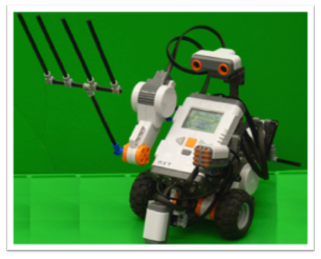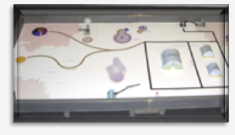 Meet Fernando Zumbado, a NASA Robotic Systems Engineer who works with the Multi-Mission Space Exploration Vehicle, or MMSEV. Zumbado explains how the robotic MMSEV vehicle is designed to adapt to its environment, capable of both in-flight missions and surface exploration of microgravity bodies.
Meet Fernando Zumbado, a NASA Robotic Systems Engineer who works with the Multi-Mission Space Exploration Vehicle, or MMSEV. Zumbado explains how the robotic MMSEV vehicle is designed to adapt to its environment, capable of both in-flight missions and surface exploration of microgravity bodies.
Tag: Robotics
NASA Now: Scientific Method — Using Robots for Inquiry
 Paulo Younse is a robotics engineer at NASA’s Jet Propulsion Laboratory located in Pasadena, Calif. and is an expert on NASA’s newest Mars rover, Curiosity. In this NASA Now classroom video he talks about how each mission to Mars is determined by the information gained from previous missions. He explains how scientists and robots work together using the scientific method of research.
Paulo Younse is a robotics engineer at NASA’s Jet Propulsion Laboratory located in Pasadena, Calif. and is an expert on NASA’s newest Mars rover, Curiosity. In this NASA Now classroom video he talks about how each mission to Mars is determined by the information gained from previous missions. He explains how scientists and robots work together using the scientific method of research.
This video is available on the NES Virtual Campus beginning Apr. 11.
NASATalk NXT Tweetup
 The NASATalk NXT Tweetup will provide a light introduction for those new to Twitter, while at the same time presenting several NXT robotics resources for use in classroom or informal education settings, on Monday-Friday, April 9-13, from 4-5 p.m. EDT.
The NASATalk NXT Tweetup will provide a light introduction for those new to Twitter, while at the same time presenting several NXT robotics resources for use in classroom or informal education settings, on Monday-Friday, April 9-13, from 4-5 p.m. EDT.This event focuses on NXT robotics questions, answers and comments being addressed within the activities presented in the Group Activities on the NASATalk NXT Tweetup website.
The activities include:
Link to the NES Virtual Campus home page.
Live Video Chat: One Giant Charge for a Robot
 Sandeep Yayathi works on Robonaut, a dexterous humanoid robot built and designed at NASA’s Johnson Space Center in Houston. On April 4, 2012, from noon – 1 p.m. EDT, Yayathi will answer student questions about his work with Robonaut, his career path and what the future holds for robotics. Robonaut 2, or R2, launched to the International Space Station on space shuttle Discovery as part of the STS-133 mission. It is the first dexterous humanoid robot in space and the first U.S.-built robot at the space station.
Sandeep Yayathi works on Robonaut, a dexterous humanoid robot built and designed at NASA’s Johnson Space Center in Houston. On April 4, 2012, from noon – 1 p.m. EDT, Yayathi will answer student questions about his work with Robonaut, his career path and what the future holds for robotics. Robonaut 2, or R2, launched to the International Space Station on space shuttle Discovery as part of the STS-133 mission. It is the first dexterous humanoid robot in space and the first U.S.-built robot at the space station.
Robonaut 2 Joins ISS Crew
 Almost 200 people from 15 countries have visited the International Space Station, but the orbiting complex has so far only ever had human crew members – until now.
Almost 200 people from 15 countries have visited the International Space Station, but the orbiting complex has so far only ever had human crew members – until now.
Link to the NES Virtual Campus home page.
Flight Engineers Cady Coleman and Paolo Nespoli unpack the newest member of the Expedition 27 crew, Robonaut 2
the first humanoid robot in space. R2 was delivered to the International Space Station by space shuttle Discovery on STS-133.
Robotics Contest: Watch, Cheer and Send Questions
 Sixteen student teams from nine elementary, middle and high schools will put their software-enabled, battery-powered LEGO robots against the clock in the 5th Annual Southern California Robotics Competition at NASA’s Jet Propulsion Laboratory in Pasadena, Calif., on Tuesday, March 15, 2011.
Sixteen student teams from nine elementary, middle and high schools will put their software-enabled, battery-powered LEGO robots against the clock in the 5th Annual Southern California Robotics Competition at NASA’s Jet Propulsion Laboratory in Pasadena, Calif., on Tuesday, March 15, 2011. Link to the NES Virtual Campus home page.
